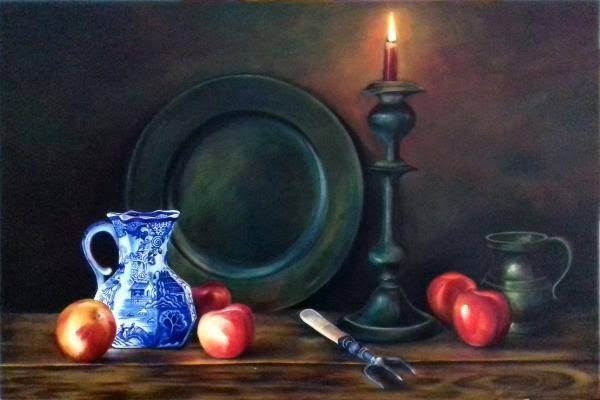Discover how to elevate everyday objects through still life photography. Explore key techniques in composition, lighting, object selection, and post-processing to transform mundane items into captivating works of art.
Still Life Photography: Enhancing Ordinary Things.
Introduction
Still life photography, which focuses on photographing objects provides a chance to turn everyday items into captivating and thought provoking visuals. This style of photography showcases the importance of composition, lighting and setting in transforming objects into captivating and beautiful subjects. In this article we will delve into the principles and methods of still life photography, offering tips on how to elevate common objects into remarkable artistic creations.
The Art of Composition
The key to captivating still life photography lies in composition. A thoughtfully arranged photo can greatly enhance the subjects allure. To excel in composition keep these factors in mind;
- Balance Striking balance means positioning elements in the frame to achieve a sense of unity. This can be done either symmetrically or asymmetrically. Symmetrical balance involves mirroring elements on side of the frame while asymmetrical balance adds interest by placing elements unevenly yet harmoniously.
- Rule of Thirds The rule of thirds is a timeless compositional method that divides the frame into a 3x3 grid. By positioning elements along these lines or at their intersections you can create a more captivating and dynamic image. This technique effectively directs the viewers attention to aspects of the composition.
- Leading Lines Leading lines steer the viewers gaze throughout the photograph, adding depth and perspective. Utilize natural or artificial lines such as a table edge or a bottles curve to guide the viewers eye towards the focal point of the image.
- Framing: Include elements in the scene that frame the subject. This can be achieved by using objects in the foreground or background that highlight the theme. Framing serves to focus on the subject and provides context for the overall composition.
Lighting Techniques
Lighting plays a role, in still life photography impacting the atmosphere, texture and sharpness of the photo. To achieve effects consider trying out different lighting methods:
Natural Illumination: Using light can create a soft and diffused look that showcases the texture and details of the objects. Place items near windows or use diffusers to mellow out sunlight. Natural lighting often enhances colors and gives the image a more genuine feel.
Artificial Illumination: Artificial lighting like studio lamps offers control, over how bright and where the light falls. Employ diffusers or softboxes to produce light. Play around with sources and angles to achieve your desired outcome.
Backlighting: Backlighting involves positioning the light source behind the subject creating a silhouette or accentuating the objects edges. This technique can result in striking and visually captivating images, by highlighting shapes and contours.
- Considering Reflections and Shadows: Take note of reflections and shadows in your photography. They can bring depth and richness. Experiment with surfaces to create effects or arrange objects to cast shadows that improve the overall composition.
Choosing and Arranging Objects
When it comes to creating captivating still life photographs the thoughtful selection and arrangement of objects plays a role. Here are some tips to consider.
- Choosing Objects: Opt for objects that boast shapes, textures or colors. Everyday items like fruits, flowers or kitchen tools can transform into subjects when presented in ways. Look for combinations of colors or contrasting textures to add an element of visual intrigue.
- Arranging Grouping: Similar objects together to establish a composition. Organize the items in a way that directs the viewers gaze and maintains balance within the frame. Feel free to experiment with different layouts to discover the most visually appealing arrangement.
- Embracing Minimalism: Consider focusing on a few carefully chosen objects. This minimalist approach can showcase the beauty of items while minimizing visual distractions. It often leads to more impactful and concentrated images.
- Enhancing with Props and Backgrounds: Props and backgrounds can elevate the overall composition. Simple backdrops like fabrics or textured surfaces can help objects pop. Ensure that props complement the main subject without dominating it.
Post-Processing and Editing
After taking your still life photos post processing plays a role in enhancing and perfecting your images. Here are some key points to keep in mind while editing;
- Adjusting Colors. Modify the color balance and saturation to make sure the hues in your photo look realistic or creatively altered. Color adjustments can set the tone and impact of the image.
- Tweaking Contrast and Brightness. Fine tune the contrast and brightness levels to emphasize details and enhance the clarity of the photo. Adjusting these parameters can bring out textures and create a more visually appealing shot.
- Cropping and Straightening. Trim the image to enhance its composition and eliminate distractions. Ensure that the image is straightened and properly aligned for a polished look.
- Touching Up. Use retouching tools to remove flaws or distractions. This may involve cleaning up spots smoothing out surfaces or fixing imperfections.
Conclusion
Still life photography is an art form that can turn objects into stunning visuals. Through careful composition, lighting experimentation, object selection and arrangement, along with post processing techniques photographers have the ability to transform everyday items into masterpieces. Regardless of your experience level in photography delving into still life photography opens up a world of creative possibilities and self expression. Embrace the task of discovering beauty in the mundane and allow your still life photographs to convey a narrative that resonates with your audience.
